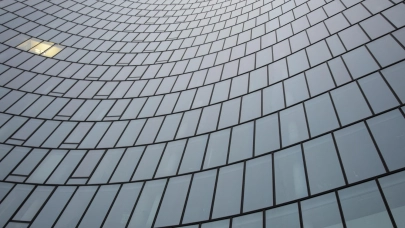
Real estate investment decisions in CEE are currently made considering various challenges, such as difficulty in predicting five-year exit strategies for investments, liquidity in the region, and concerns about the impact of ESG regulations on building compliance and financing, to name a few. CEE Property Forum 2024 in Vienna has taken a closer look at European investment trends in the panel chaired by Tim Wilkinson, MRICS, Head of European Acquisitions at Indotek Group.
„A lot of money is being raised for real estate worldwide at the moment, but it's opportunistic money. This money is expecting volatility and opportunity of the yields,“ Tim set the scene. Moreover, many core investors are cautiously strategising, looking towards 2025 for potential market entry.
„We observe the current situation in terms of the ongoing transactions and behaviour of the investors. We also see newcomers, not only from the eastern part of Europe but from Lithuania, Kazakhstan, and also from Ukraine,“ Daniel Puchalski, Managing Partner and Co-Founder at immo lab.re commented on emerging capital sources.
Andrei Văcaru, Head of Capital Markets CEE at iO Partners agreed: „We also see that in Central Europe there's this amazing emergence of local capital, Czech and Hungary being the most obvious examples in this respect. So liquidity doesn't only depend on Western capital.“
„Romania has liquidity and demand, especially in the 5 to 20 million ticket size segment. And we've also seen strong demand for ultra-prime assets,“ joined Mihai Paduroiu, CEO Office Divison at One United Properties.
Katarina Horvathova, Vice President Transactions CEE, Real Estate at Macquarie Asset Management went further in identifying investors: „We are trying to raise several funds. Investors in CEE want to get their timing moments right, they are looking for their opportunities.“
Andrei added his experience: „We see volumes increasing. Across the four countries where we do investment, we've got now 16 transactions in due diligence, which is something we haven't seen in a very long time.“
Jakub Stanislav, Head of Investment Properties and Director at CBRE Czech Republic, shared a similar point of view: „If you look at Poland, the lack of domestic investors is changing the deal more dramatically. But then if you look at the Czech Republic, with local investors we're doing deals in the €30-40 million range.“
There is a difference between Western Europe and CEE yields, Tim moved to details. „Let's look at Poland, for example, there are about 100 - 150 basis points between Madrid and Warsaw. When you talk to investors and try to understand what output there is in five years, what do you see?“ he asked Daniel. „Most probably next year, we can expect stabilisation and a better situation, hopefully in the office market. We observe a little bit more movement than in the past. First, extensions are appearing, and a few newcomers. It looks like the office market will have a better chance next year.“
The outlooks for the next period are crucial for investors. Has the market or particular asset classes reached the bottom? Can repricing be awaited? Jakub believed that it had still come up. „I think there will be a total game changer because everyone is making the view that the interest rates will be dropping. If that doesn't happen now in December or Q1 next year, business plans need to be changed,“ he explained.
The rise of populism and geopolitical concerns contribute to market uncertainty. Mihai reassured that regarding elections in Romania, the market is resilient: „In the past three years, we've welcomed in our portfolio companies like Siemens Energy, Ford Motors, Stripe and Infineon to set up large scale operations in Bucharest, in our buildings. This tends to prove, again, the fundamentals and the potential that Romania has.“
With ESG regulations starting from January 1, 2025, and with harder times expected in 2030, investors are concerned about the impact of these on building compliance and financing. Daniel summarised the emerging importance of the topic:“ We can speak about the proper cut rates for the future once we understand 100% of the current quality of the market. In my opinion, institutional investors will not even spend five minutes on buildings which are not properly prepared for the future regulations.“



